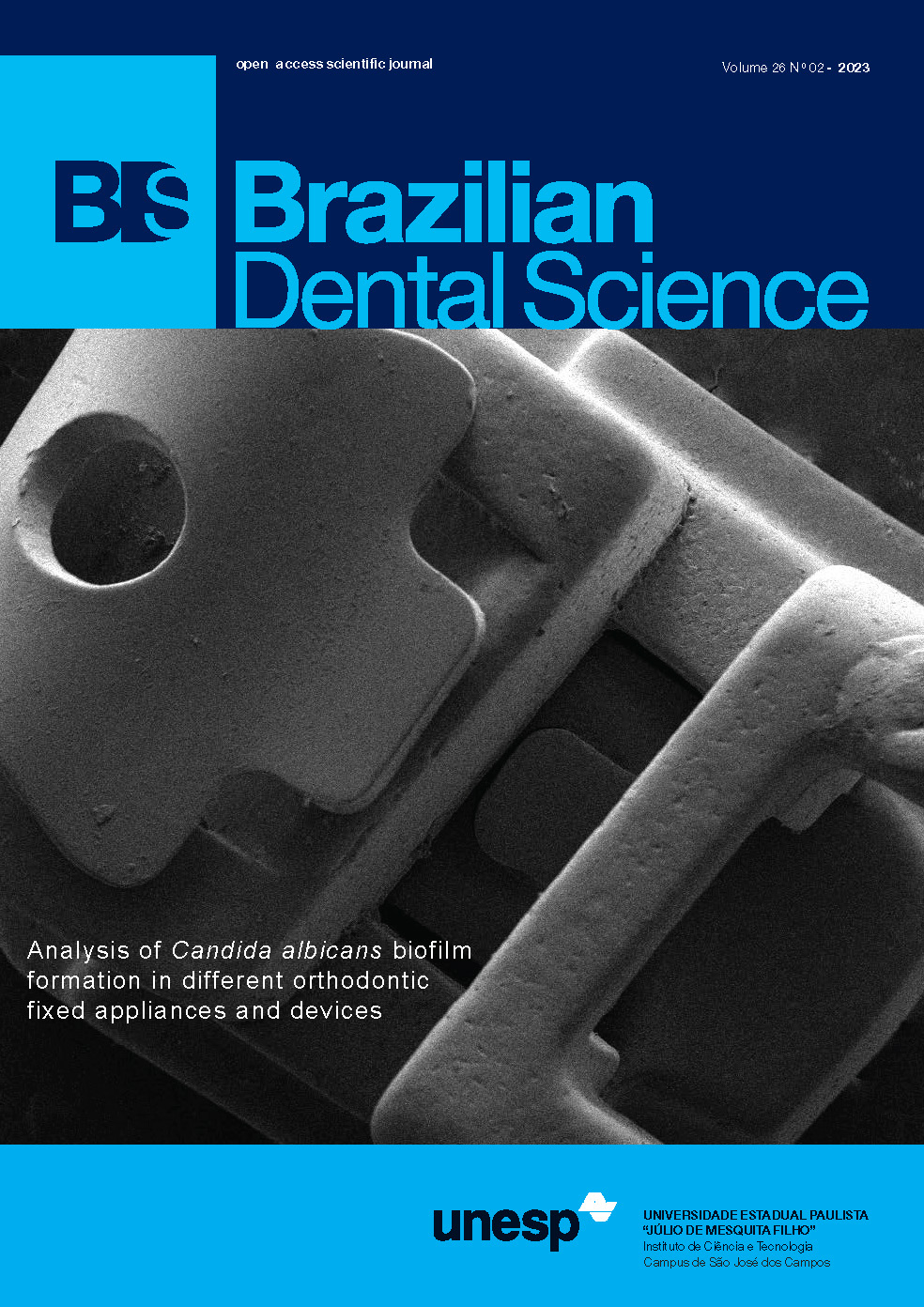Color stability and degree of conversion of amine-free dual cured resin cement used with two different translucencies of lithium disilicate ceramics
DOI:
https://doi.org/10.4322/bds.2023.e3614Abstract
Objective: The present study aims to evaluate the color stability and degree of conversion of amine-free dual cured resin cement compared to light cured and amine-containing dual cured resin cements used with two different translucencies of thin esthetic restorations. Material and Methods: A total of 120 specimens were prepared for color stability testing (n=60). The specimens were divided into three main groups according to the resin cement type. Group 1: amine-free dual cured, Group 2: light cured, Group 3: amine-containing dual cured. Each group was further subdivided according to the ceramic translucency into two subgroups: high and low translucency. Color stability was assessed by a spectrophotometer before and after thermal aging. For the degree of conversion assessment (n=60), Fourier transform infrared spectroscopy was used at three different time intervals. Statistical analysis was performed using multi-factorial ANOVA, followed by one-way ANOVA with Bonferroni correction. Results: Amine-containing resin cement showed significantly higher Eab and E00 in both translucencies (4.5±0.3, 3.5±0.3 respectively for high translucency ceramic and 3.8±0.4, 3.0±0.3 respectively for low translucency) than the other tested cements (p<0.001). The highest degree of conversion (DC) was shown after 2 weeks by the amine-free dual cured resin cement (86.27±0.74). Conclusion: Aminefree dual cured resin cement can be an alternative to light cured one for cementation of thin veneers since it showed comparable color stability and high degree of conversion.
KEYWORDS
Resin cement; Color; Polymerization; Light curing of dental resins; Lithium disilicate.
Downloads
Published
How to Cite
Issue
Section
License
Brazilian Dental Science uses the Creative Commons (CC-BY 4.0) license, thus preserving the integrity of articles in an open access environment. The journal allows the author to retain publishing rights without restrictions.
=================




























